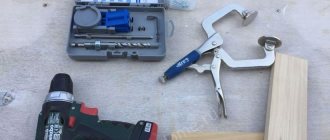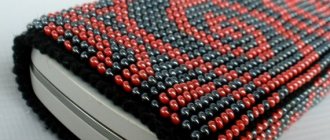Band metal clamps
Most often, this type of fastener comes standard at the factory. This is due to reliable fixation and ease of installation. In order for the CV joint clamp to be used for a long time, the following conditions must be met:
- when making the tape, the manufacturer used high-quality steel;
- installation on the boot was carried out using a device for tightening CV joint band clamps;
- To install fasteners, you must have skills in using the tool.
To tighten the CV joint clamps, you can use improvised means, but the quality in this case will depend only on the experience of the craftsman. The only tool you need is pliers. Sequence for tightening the clamp:
- The clamp fits onto the boot;
- The tip is grabbed with pliers;
- Pull with a little force and make sure that the clamp tightens the boot without distortion;
- Create maximum force and bend upward;
- Bend the antennae;
- Fasten the end of the ribbon.
Upon completion of installation on the constant velocity joint, it is necessary to check the uniform fit of the clamp and the absence of distortions.
How to tighten the boot clamp of a U-shaped CV joint
Now covers have begun to be made from a harder material than ordinary rubber. They can be difficult to tighten using ordinary band clamps. Therefore, many car enthusiasts prefer modernized devices. There are different options, among the inexpensive ones are fasteners with U-shaped ears. They are tightened with pliers, most often of the Licota ATC-2190 brand.
These pliers are quite expensive - up to 20 euros, but there are cheaper options. It is better to use pliers with a 1/2 square cutout. The handles on them can be extended using knobs. The principle of operation of the device is simple: it compresses the U-shaped tubercle on the clamp, and the fastener is tightened well. Tools with long handles are especially effective. They even compress well covers made of dense material.
Select fasteners according to the vehicle manufacturer's recommendations. Make sure that the clamps are installed correctly - then you won’t have to worry about replacing them for a long time.
How to make a pipe clamp with your own hands
At the first signs of depressurization of the pipeline, it is necessary to quickly find the damaged area and eliminate the identified defect. When performing emergency emergency work, you can use homemade clamps to stop the flow in the pipeline for a while.
Ready-made clamps for fastening pipes, made in the factory from stainless steel or fire-resistant plastic, are used when performing installation work on the installation of heating, sewerage, water supply, and gas supply systems.
These fasteners allow you to reliably fix the position of pipes running along horizontal and vertical surfaces (ceilings, walls), as well as those installed on special racks.
In this video, an experienced craftsman shows how to make a wire clamp:
How to repair a fistula in a pipe
How to repair a fistula in a pipe. Sometimes a situation occurs that a fistula appears in an iron pipe of a water supply or heating riser. This is especially common in hot water risers. The first signs that a pipe will soon burst is when a red growth appears on it, but it may not appear.
In scientific terms it is called pitting corrosion, but in simple terms it is “Pipe” to a pipe. Fistulas appear on the pipe, either due to wear or due to stray currents.
In principle, when you get a fistula, you won’t care why it appeared, you will have a question: how to fix it quickly? I'll try to describe a couple of options on how to do this.
How to seal a fistula in a pipe with a clamp
In general, if you see that your pipe is not of the first freshness, then it is advisable to purchase a couple of clamps in advance for the diameter of the water supply riser, and cut rubber for them. Because most often this happens at night, and by the time the emergency crew or mechanic arrives, it can be heavily flooded. There are a couple more nuances regarding the size of the fistula.
If the fistula is the diameter of a needle, then you can install a clamp without shutting off the water, but if it is larger, then when installing the clamp, you risk getting burned; if the fistula is in a pipe with hot water, it is better to turn off the water at the riser. If the fistula is small, you can try to seal it with a regular car clamp, as in the photo.
You do this: take a piece of rubber and cut out a thin ribbon, the width of the ribbon should be equal to the width of the clamp, maybe 3-4 millimeters more, but not less, now measure the length of the rubber band. We wrap it around the pipe and cut off the excess. Then cut off another 1 cm. Next, open the clamp, put it on the pipe, and grab it a little.
We insert the rubber gasket that you cut out under it and carefully bring it to the place where the fistula has formed. Cover it and tighten it with a screwdriver or a wrench, depending on what kind of tightening device the clamp has.
I have had such cases in practice that in an apartment there is a fistula with the diameter of the “eye of a needle”, it whistles very loudly, but there is not a lot of water, the tenant, the grandmother “God’s dandelion” is screaming like crazy, but I can’t turn off the water, since it is from won’t let me out of the apartment, and I didn’t have the clamp with me, what I do, after looking and determining that the pipe is in excellent condition, I break off a piece of a match, and insert the tip into the fistula, and there was no fistula, but this is so that the grandmother calmed down. Then, of course, I installed the clamp. I often closed such fistulas in the basement this way, but there were also punctures, you insert a match, and the fistula becomes 2 times larger, so I do not advise you to use this method. Well, this is a digression, let's consider another option.
Docent86 › Blog › How to properly plug a brake hose
Good day to all!
In all countries, the traffic rules clearly state that it is prohibited to operate a car with a faulty brake system. Even in the traffic rules of Zimbabwe, it seems that this point comes next to the point that prohibits driving with a spear in a minibus...
No caliper or calipers! It is a malfunction with which you cannot drive. But this is not about us. We always really need it! There are always good reasons. Someone is not ready to wait a couple of days until the spare parts arrive, someone is not ready to buy new pistons to replace the rotten ones, because in the village his godfather has the same minibus that was destroyed by a Kamaz, in which the brakes were on fire...
Do not pinch the brake hoses! Yes, I understand that most of you were repairing cars before I walked under the table and you always pinched everyone’s hoses even before they cut my umbilical cord. And everything was fine. But I don’t agree with this at all! Yes, there are special devices, yes there are manuals in which all this is prescribed... But well, it doesn’t matter, even if it doesn’t work once out of 10 times, it’s better not to try!
If you rummage through the blog, you will find photos of hoses pinched by corsages, but if you read the whole thing, you will understand that they were all being replaced, there was nothing to regret!
Let's think that I advise this in order to eliminate brake fluid leaks during caliper repairs











